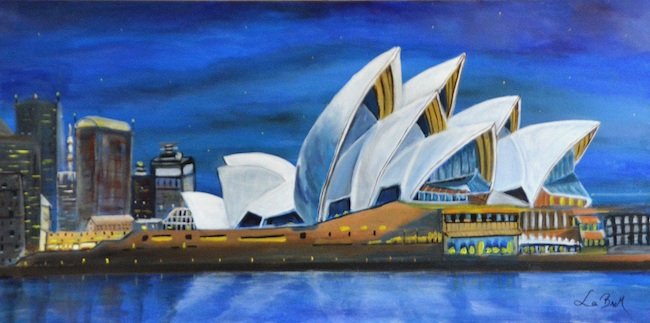When you visit a faraway country, the instinct is to take with you the images but also the emotions experienced during that trip, in the knowledge that any photograph cannot do justice to all that the eye has perceived through the filter of sensations; art is able to combine objectivity with the subjectivity of experience and has been the means by which spectacular images of past panoramas have come down to us. Today’s protagonist, although with a decidedly more modern and cosmopolitan approach, chooses to remember the places and the beauty that she has seen before her eyes, which differs from country to country and yet always amazes her.
Romanticism was the pictorial movement that, between the eighteenth and nineteenth centuries, opened the door to landscape, understood as a projection of the artist’s sensations, of that bond between man and nature that became fundamental, especially in the English interpretation of the current, the one of which John Constable and William Turner were the greatest exponents. While Turner exalted the impetuosity and rampage of gales and sea storms, introducing small details of human life such as boats and sailing ships to emphasise man’s insubstantiality in the face of nature’s unstoppable power, John Constable chosed to narrate places and views of memory, introducing his feelings of nostalgia for a land he loved and wanted to consign to eternity. At the end of the 19th century, the landscape theme of English Romanticism was taken up and revisited by Impressionism, which decreed the definitive affirmation of a pictorial genre that, more or less linked to subjective emotion, was destined to survive and took on different connotations over the following centuries. From the desolate and mysterious cities of Giovanni De Chirico‘s Metaphysical Art to the silent and melancholic suburban views of Edward Hopper‘s American Realism to the nocturnal visions among the skyscrapers of the contemporary neoimpressionist Jeremy Mann, the landscape never ceases to fascinate and to constitute a memory of the changing times and its transformations. Mechthild Brebera, aka La BreM, an Austrian painter who had to give up her passion for creative expression for a long time due to the choices and vicissitudes of life, combines her love for travelling and discovering landscapes and countries far from the one in which she lives with her ability to imprint emotions on canvas, giving life in fact to an itinerant diary through which she recounts not only the objectivity of what she has seen but also the emotion of everything she has experienced while visiting those places.
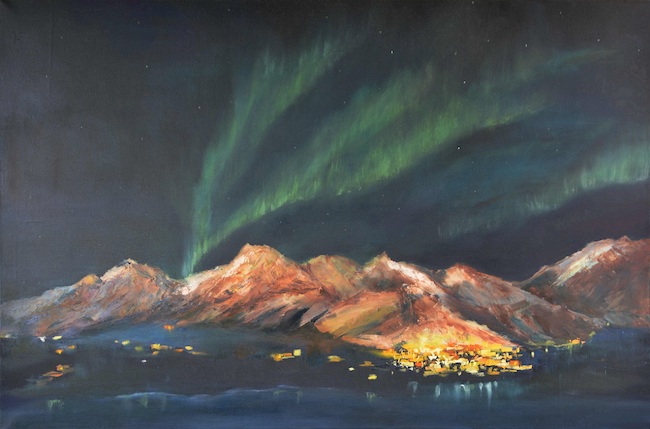
Realism is the style that best suits her artistic inclination because it is only through the images she observes that she can rework the sensations she perceived and manifest them on canvas. For her, the world is a place to discover, to visit and to be conquered and to be fascinated by, and this is what emerges from the works that portray the symbols, the emblems of the main cities, those that are normally reproduced in photographs in which, however, there is a tendency to lose that moment of emotion, that instant in which the heart beats that only an artist is able to leak from his images, immortalising it on canvas.
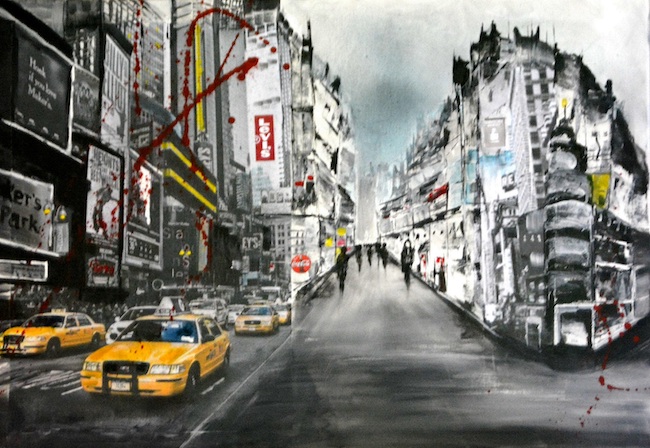
Mechthild Brebera lets herself be bewitched by the noisy streets of the Big Apple in her artwork New York, in which she almost seems to break up the perspective planes to differentiate the reality observed from that perceived, the hustle and bustle of traffic on the one hand and the enchantment of having those skyscrapers, whose images fill the world, in front of her eyes on the other; The parallelism creates a distinction, a borderline between objectivity and subjectivity, between what is seen and what is felt, between what is and what has pervaded the artist’s interiority.
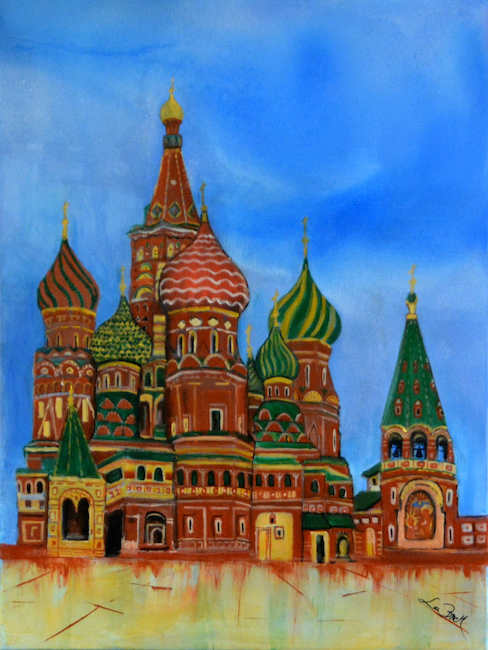
In Moskau (Moscow), on the other hand, the desire to narrate the symbol of the Soviet capital, St Basil’s Cathedral, prevails over the need to include man, because after all it is what human being is able to create and build that survives him, the eternal symbol of a past that is inextricably intertwined with the present and continues to make its echo be heard over the centuries.
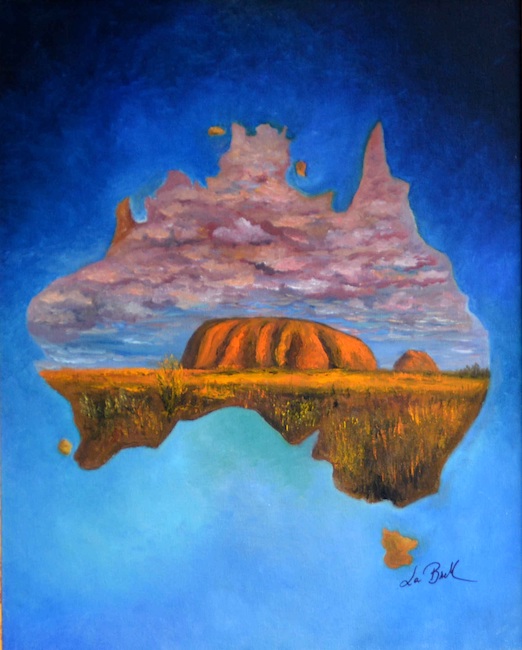
Just as in Australien (Australia) she depicts the emblem of what nature has created, the rocky mountains of Ayers Rock in the country’s desert outback, which reveal the artist’s attention to uncontaminated places that have remained intact precisely because they have not been inhabited by man. At the same time with the itinerant route, Mechthild Brebera dedicates an entire series of works to the theme of ecology, bringing to light and drawing the viewer’s attention on how important and fundamental it is to protect animals and nature before human intervention destroys the circle of life that encompasses it and that, even if ontly partially disintegrated, can cause unimaginable chain effects with initially unthinkable consequences on an ecosystem that needs total balance between all its elements.
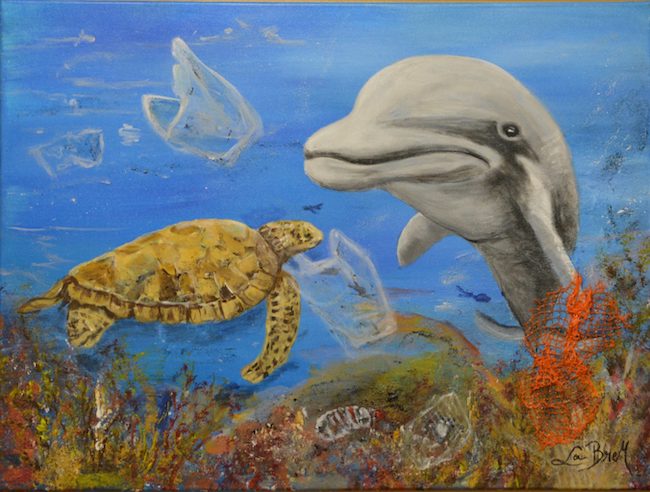
In Plastic in the Ocean, Brebera seems to want to recount the astonishment, or perhaps it would be better to say disorientation, of the marine inhabitants when they find themselves surrounded by unknown species, plastic bags, which they do not perceive as a threat that could actually compromise their lives, nor much less their usefulness in a world, the underwater world, in which everything has a reason to exist except what is produced and introduced by the hand of man.
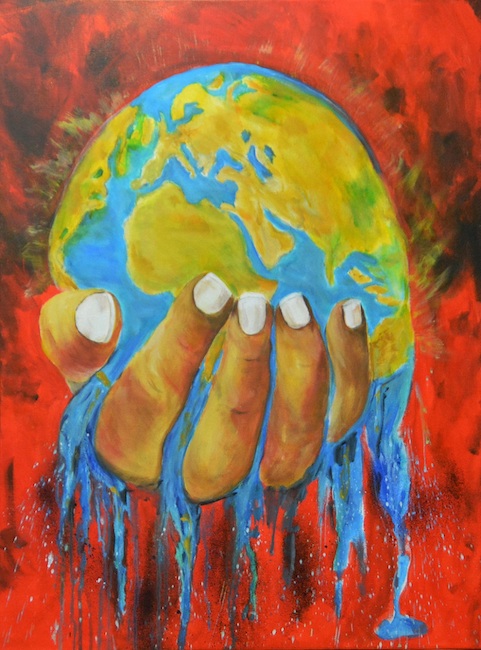
And again in Klimawander (Climate Change), the artist emphasises the risk to which humanity is unconsciously heading and which has no chance of salvation except through external intervention, that hand which seeks to contain the uncontainable; there is a slight shift towards Metaphysical Surrealism in the more ecological canvases, because the image must be functional to the concept, to reflection, to meditation on a delicate but important theme, a window on a dystopian yet possible future if the trend is not reversed.
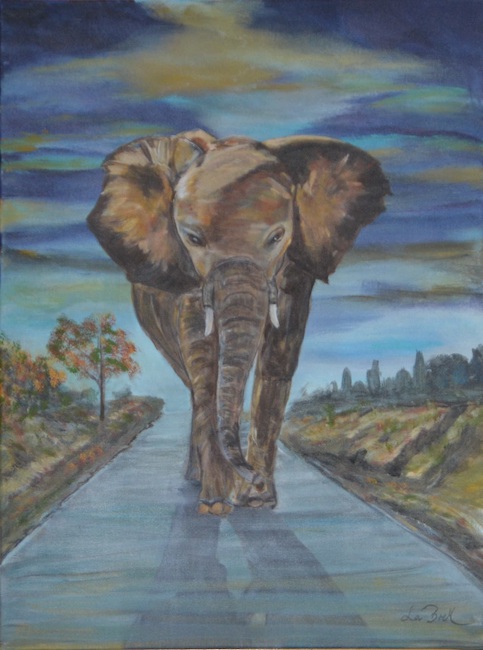
Since 2012 Mechthild Brebera has taken part in many group and solo exhibitions in Austria and Germany and is a member of many of her country’s leading art and cultural associations. But her creative flair does not stop at figurative art alone, as in recent years she has started to design and produce cabochon and resin jewellery.
MECHTHILD BREBERA-CONTACTS
Email: scorpion@chello.at
Website: www.la-brem.at
www.hobby-artist.at
Facebook: https://www.facebook.com/hilde.skorpion/
Instagram: https://www.instagram.com/la_brem58/


